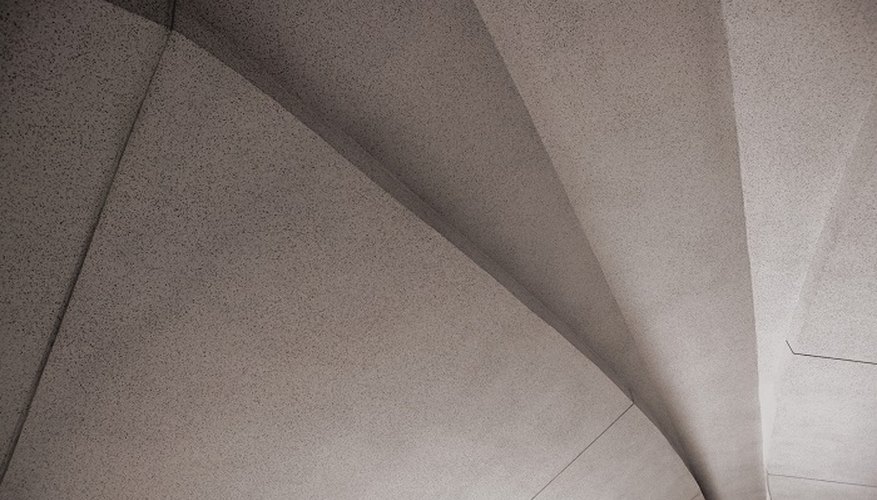Many large slabs are split into several separate pours on different days. Sometimes, if the next section is scheduled in a different construction phase, months can pass before the next section is poured. And you can't just pour two slabs next to each other and have them meet the structural requirements of your project; you must join the two concrete slabs in the proper way. Joining slabs involves creating a joint that both structurally connects the slabs and provides a point to accommodate how the different ages of the slab will respond to climate and stress. While it sounds complicated, the process of joining two concrete slabs is easy but might take a few attempts to get it right.
Consult your project plans to determine the spacing of the rebar that was placed in the first slab and the spacing of the rebar that is to be placed in the second slab. Measure and mark the side of the concrete where the two slabs will be joined with points where you will need to drill and epoxy splice dowels. You want to offset the dowels, at the dowel's width, to the rebar spacing. For example, if both slabs have rebar mats that are spaced at 46 cm (18 inches) and use No. 5 rebar, then measure and mark for your dowels at a 18.5 inches (47 cm) of spacing. If your two slabs have different spacing for their rebar mats, measure and mark so your dowels fall in the middle of the spacing of the second slab. For example, if the first slab is at 30.5 cm (12 inches) and the second is spaced at 46 cm (18 inches) then measure and place your first mark at 23 cm (9 inches) and then continue spacing the marks at 46 cm (18 inches). This will place the dowel in the centre of the second slab's rebar spacing.
- Many large slabs are split into several separate pours on different days.
- If your two slabs have different spacing for their rebar mats, measure and mark so your dowels fall in the middle of the spacing of the second slab.
Drill out the holes for your dowels using a hammerdrill. Drill the exact depth specified in the general instructions section at the front of your project plans. Make sure you use a drill bit that is equal to or slightly larger than the rebar dowel you will be using.
Clean out the holes by blowing them with compressed air.
Load your concrete epoxy adhesive into the epoxy gun according to the instructions included with the gun. Insert the tip of the epoxy gun into the hole as far as you can. Fill the hole with epoxy slowly. Pull the tip of the gun out of the hole as it fills.
- Drill out the holes for your dowels using a hammerdrill.
- Load your concrete epoxy adhesive into the epoxy gun according to the instructions included with the gun.
Insert your rebar dowel into the hole. Push the dowel in and out several times to get rid of any air pockets in the hole before pushing it in as far as you can. The rebar dowel size will also be specified in the general instructions section of your project plans. Let the epoxy set for the length of time specified on the packet.
Run a bead of concrete epoxy on the face of the edge of the first concrete slab, above and below the dowels. Cut your expansion joint material with a box cutter so you can press two strips onto the concrete (above and below the dowels) the entire length of the edge. You are now ready to pour your slab.
- Insert your rebar dowel into the hole.
- Cut your expansion joint material with a box cutter so you can press two strips onto the concrete (above and below the dowels) the entire length of the edge.
TIP
Dowel out your first concrete slab before you pour by drilling holes in the wood form at the end of the pour and passing the rebar dowels through so that half the dowel is in the first pour and half extends into the planned second pour. This will save you the time and expense of drilling and epoxying the dowels later.
WARNING
Make sure that you abide by the specifications for the size of dowel to be used when you join two concrete slabs or your building inspector may fail the second slab and you will have to tear it out and reconstruct it.
